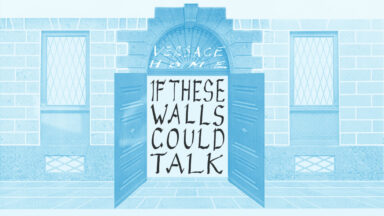Just a few more days to see the exhibition Richard Avedon Relationships at Palazzo Reale, Milan
Until January 29, Palazzo Reale in Milan is hosting the exhibition Richard Avedon Relationships. The exhibition references the exhibition that was held, at the same venue, more than two decades ago. Domenico Piraina, director of Palazzo Reale, recalls that in the fall of 1994, the exhibition Evidence 1944-1994 sought to chronicle 50 years of work by one of the greatest photographers of the 20th century, Richard Avedon. Piraina says that “the project had an international scope because it involved three European institutions, (…) and was an incredible success with the public, with more than 80,000 visitors. Reflecting on that event so many years later, we are convinced that that exhibition helped enrich the cultural mission of the Royal Palace. In the first place, the idea of devoting a part of the programming to the enhancement of the photographic language, which before then had been the subject of rather sporadic and occasional initiatives, began to take shape right then. From that moment on, the decision to present major photography exhibitions became more and more planned and scheduled. Second, that exhibition made it possible to start a deep and long-lasting relationship with the world of fashion, which for Milan represented – continues to be – a strong identity element”.
More than two decades later, the exhibition Richard Avedon Relationships aims to show the public the eclectic work of the American photographer. The exhibition provides an in-depth look at the innovative features of Avedon’s art that made him one of the most influential authors of the 20th century. On the one hand, Avedon revolutionized the way models were photographed, transforming them from static subjects to leading actresses on the set, showing their human side as well. On the other, his striking celebrity portraits, in black and white and often in large format, are capable of revealing the innermost psychological side of the person portrayed.
The exhibition, divided into ten sections, is built around the two most characteristic figures of his research: fashion photographs and portraits. The fashion ones can be grouped into two main periods. The youthful images, made before 1960, are taken “on location” and feature models impersonate a role to evoke a narrative. Later works, on the other hand, focus exclusively on the model and the garments she wears. In these later photos, Avedon often uses a minimalist, uniform background, and most often portrays the subject in dynamic poses, using the fluid forms of the body to reveal the construction, fabric, and movement of the garment.
There are many supermodels with whom Avedon worked intensively, from Dovima to China Machado, Suzy Parker to Jean Shrimpton, Penelope Tree to Twiggy, and Veruschka. A series of images depicting Penelope Tree or Jean Shrimpton reveals how Avedon knew how to exploit the particular qualities of a model’s face or body, and three photographs of Dorian Leigh dating from 1949 show how he could transform the subject through different locations and outfits so that he impersonated distinct roles and characters.


Regarding portraits, Avedon is known for his particular style, which he developed in 1969. Among the salient features of his approach is to include the use of the white background, which allowed him to eliminate the potentially distracting elements of a given photographic set in order to emphasize the qualities of the pose, gesture, and expression.
Working primarily with a large-format camera, he shot his subjects closely enough so that they occupied a large section of the frame, reinforcing in the viewer an awareness of the negative space between the figure and the margin. The interplay between sculpture and void, body and space, solid form, and the defining power of the edge is crucial to the power of his images.
The appeal of these photos is not only related to composition, but also to the sense of intimacy they evoke. Avedon brings to life powerfully descriptive portraits that bring the viewer closer to the subjects portrayed. The ability to see facial details, even the smallest, places the viewer at a distance generally reserved for spouses, lovers, parents, or children.
The exhibition also features a large selection of portraits of celebrities from the world of entertainment, actors, dancers, and musicians, but also civil rights activists, politicians, and writers, including those of the Beatles (John Lennon, Paul McCartney, George Harrison, Ringo Starr), as well as Bob Dylan by Michelangelo Antonioni, Allen Ginsberg, Sofia Loren, Marylin Monroe, the Dalai Lama, and two by Andy Warhol, where the father of American Pop art decides to show his intimacy to Richard Avedon by exhibiting his gunshot scars after surviving an assassination attempt.
Finally, we could not miss a section dedicated to the collaboration between Richard Avedon and Gianni Versace, which began with the campaign for the spring/summer 1980 collection, which decreed the designer’s debut, up to the one for the spring/summer 1998 collection, the first signed by Donatella Versace. Avedon’s work for Versace is a depiction of how that unique relationship that is sometimes created between designer and photographer can produce images destined for an out-of-time zone, definitively beyond the circumscribed narrative they were originally intended for, linked to the seasonality of fashion, to revolutionize instead its global narrative.




